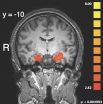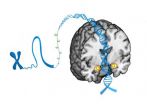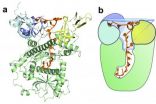(Press-News.org) Demand for general practice appointments is rising rapidly, and in an attempt to deal with this, many practices have introduced systems of telephone triage. Patients are phoned by a doctor or nurse who either manages the problem on the phone, or agrees with the patient whether and how urgently they need to be seen.
A new large study, published in The Lancet on 4 August 2014 and funded by the UK National Institute for Health Research (NIHR), has investigated the potential value of telephone triage for patients and for the NHS. It concluded that patients who receive a telephone call-back from a doctor or a nurse following their request for a same-day consultation with a GP are more likely to require further support or advice when compared to patients who see a doctor in person. The research concluded that 'telephone triage' systems did not reduce overall practice workload.
These findings, from a team led by the University of Exeter Medical School, are important as telephone triage is becoming increasingly popular in general practice as a response to managing patient care. Overall, the ESTEEM study – one of the first robust investigations in this field – concluded that telephone triage by a doctor or a nurse only results in a redistribution of practice workload, not a reduction. It also discovered that telephone triage is no more expensive or cheaper than care provided via traditional face-to-face appointments.
The ESTEEM trial involved more than 20,000 patients across 42 doctor surgeries in England. Practices were randomly assigned to continue delivering care in their usual way, or to change to a system using a doctor or nurse to call the patient back to offer help or advice following the patient's request for a consultation with a GP 'that same day' in the practice. The research lasted for around 2-3 months in each practice. The researchers examined patient's consulting patterns in the 28 days following their initial same-day consultation request.
Practices offering triage by a GP saw an increase of 33% in the total number of patient contacts amongst patients who had requested a same-day appointment compared to patients seen under usual care. For practices offering nurse triage the increase in the total number of contacts was 48%.
The researchers identified that there was a redistribution of GP workload associated with introducing triage. In practices providing GP triage, GPs had 39% fewer face-to-face consultations, whilst in practices providing nurse triage, GPs had 16% fewer face-to-face consultations. Thus introducing GP triage was associated with a redistribution of GP workload from face-to face consultations to telephone consultations, and introducing nurse triage was associated with a redistribution of workload from doctors to nurses.
Around half of the patients seen in 'usual care' had no further contact with the health care system in the 28 days following their initial consultation. However, 75% of patients seen in practices operating a GP telephone triage systems did make further contact, and where nurse telephone triage was in operation, 88% of patients made further contact.
Overall, patients reported a good experience of care provided by the study practices, although patients from practices providing nurse triage were slightly less satisfied than those from the other practices.
Lead author Professor John Campbell, of the University of Exeter Medical School, said: "Up to now, it has been widely thought that introducing a triage system might be an efficient way of providing same-day access to healthcare advice. However, our study suggests that introducing triage may not represent the most efficient use of doctor or nurse time. Patients who receive over-the-phone support are more likely to seek follow-up advice, meaning that the workload is only redistributed, whilst the costs are the same.
Practices thinking about introducing triage might benefit from looking at our findings carefully, and considering whether introducing triage is really likely to be of benefit to their patients, or to the primary care practice team. Healthcare managers should consider the implications across the whole system of introducing triage on a wider scale, especially given the staffing constraints and challenges faced by the NHS."
INFORMATION:
The study also involved collaborators from the University of Oxford, the University of East Anglia, the University of Bristol, and the University of Warwick. It was funded by the National Institute for Health Research Health Technology Assessment Programme.
Background information:
Demand for UK primary care is rising, with an estimated increase in workload of around 62 per cent between 1995 and 2008.
GPs in an average UK practice of approximately 6,483 patients (3.8 doctors) manage around 65 patients each day. Of these 65 patients, around 20 are requesting a same-day appointment, representing around 30 per cent of GP workload. There are around 1 million patient consultations conducted every working day by NHS GPs and their teams.
Around 12 per cent of GP consultations are conducted on the telephone, a quadrupling since 1995.
This is the first large-scale study in the world to identify the potential value and implications of introducing GP-led or nurse-led triage of patients requesting same-day consultations.
The study was supported by the NIHR South West Primary Care Research Network and the NIHR Peninsula Collaboration for Leadership in Applied Health Research and Care
Primary care telephone triage does not save money or reduce practice workload
2014-08-04
ELSE PRESS RELEASES FROM THIS DATE:
Tumor suppressor mutations alone don't explain deadly cancer
2014-08-03
Although mutations in a gene dubbed "the guardian of the genome" are widely recognized as being associated with more aggressive forms of cancer, researchers at the University of California, San Diego School of Medicine have found evidence suggesting that the deleterious health effects of the mutated gene may in large part be due to other genetic abnormalities, at least in squamous cell head and neck cancers.
The study, published online August 3 in the journal Nature Genetics, shows that high mortality rates among head and neck cancer patients tend to occur only when mutations ...
Atlantic warming turbocharges Pacific trade winds
2014-08-03
New research has found rapid warming of the Atlantic Ocean, likely caused by global warming, has turbocharged Pacific Equatorial trade winds. Currently the winds are at a level never before seen on observed records, which extend back to the 1860s.
The increase in these winds has caused eastern tropical Pacific cooling, amplified the Californian drought, accelerated sea level rise three times faster than the global average in the Western Pacific and has slowed the rise of global average surface temperatures since 2001.
It may even be responsible for making El Nino events ...
Uncovering the 3-D structure of a key neuroreceptor
2014-08-03
Neurons are the cells of our brain, spinal cord, and overall nervous system. They form complex networks to communicate with each other through electrical signals that are carried by chemicals. These chemicals bind to structures on the surface of neurons that are called neuroreceptors, opening or closing electrical pathways that allow transmission of the signal from neuron to neuron. One neuroreceptor, called 5HT3-R, is involved in conditions like chemotherapy-induced nausea, anxiety, and various neurological disorders such as schizophrenia. Despite its clinical importance, ...
Fault trumps gruesome evidence when it comes to punishment
2014-08-03
Issues of crime and punishment, vengeance and justice date back to the dawn of human history, but it is only in the last few years that scientists have begun exploring the basic nature of the complex neural processes in the brain that underlie these fundamental behaviors.
Now a new brain imaging study – published online Aug. 3 by the journal Nature Neuroscience – has identified the brain mechanisms that underlie our judgment of how severely a person who has harmed another should be punished. Specifically, the study determined how the area of the brain that determines ...
Small DNA modifications predict brain's threat response
2014-08-03
DURHAM, N.C. -- The tiny addition of a chemical mark atop a gene that is well known for its involvement in clinical depression and posttraumatic stress disorder can affect the way a person's brain responds to threats, according to a new study by Duke University researchers.
The results, which appear online August 3 in Nature Neuroscience, go beyond genetics to help explain why some individuals may be more vulnerable than others to stress and stress-related psychiatric disorders.
The study focused on the serotonin transporter, a molecule that regulates the amount of ...
Knowing what to keep and what to trash: How an enzyme distinguishes cellular messages
2014-08-03
Cold Spring Harbor, NY – Every once in a while, we are forced to sort that stack of papers on the kitchen counter. Interspersed between the expired coupons and dozens of takeout menus are important documents like your car insurance or electric bill. So it isn't an option to simply drop it all in the trash at once – you need to read through the messages to be sure that you don't lose vital information.
In the cell, proteins similarly read through messages to distinguish what needs to be saved and what needs to be discarded. But, here, the process takes on a much more ...
Atlantic origin of recent Pacific trade wind, sea level and temperature trends
2014-08-03
An Australian–US team of climate researchers has solved a puzzle that has challenged scientists for over a decade. Climate models predict that the equatorial Pacific trades should weaken with increasing greenhouse gases. Yet, since the early 1990s, satellites and climate stations reveal a rapid and unprecedented strengthening of the Pacific trade winds, accelerating sea level rise in the western Pacific and impacting both Pacific and global climate.
"The answer to the puzzle is that recent rapid Atlantic Ocean warming has affected climate in the Pacific," say the scientists. ...
Self-assembling anti-cancer molecules created in minutes
2014-08-03
Researchers have developed a simple and versatile method for making artificial anti-cancer molecules that mimic the properties of one of the body's natural defence systems.
The chemists, led by Professor Peter Scott at the University of Warwick, UK, have been able to produce molecules that have a similar structure to peptides which are naturally produced in the body to fight cancer and infection.
Published in Nature Chemistry, the molecules produced in the research have proved effective against colon cancer cells in laboratory tests, in collaboration with Roger Phillips ...
Study finds new genetic risk markers in pancreatic cancer
2014-08-03
BOSTON –– A large DNA analysis of people with and without pancreatic cancer has identified several new genetic markers that signal increased risk of developing the highly lethal disease, report scientists from Dana-Farber Cancer Institute.
The markers are variations in the inherited DNA code at particular locations along chromosomes. Several of these variations in the DNA code were identified that influence an individual's risk for pancreatic cancer.
The discovery of these markers – along with four that were previously identified is important for several reasons, said ...
Rare developmental disorder linked to tumor-suppressing protein, Stanford researchers find
2014-08-03
CHARGE, which affects 1 in 10,000 babies, is an acronym whose letters stand for some of the more common symptoms of the condition: coloboma of the eye, heart defects, atresia of the choanae, retardation of growth and/or development, genital and/or urinary abnormalities, and ear abnormalities and deafness.
Originally, the researchers were examining the tumor-suppressive properties of the protein, called p53, not investigating developmental disorders. But when a mouse model developed a strange set of deficiencies, the researchers followed a trail of clues that led them ...





